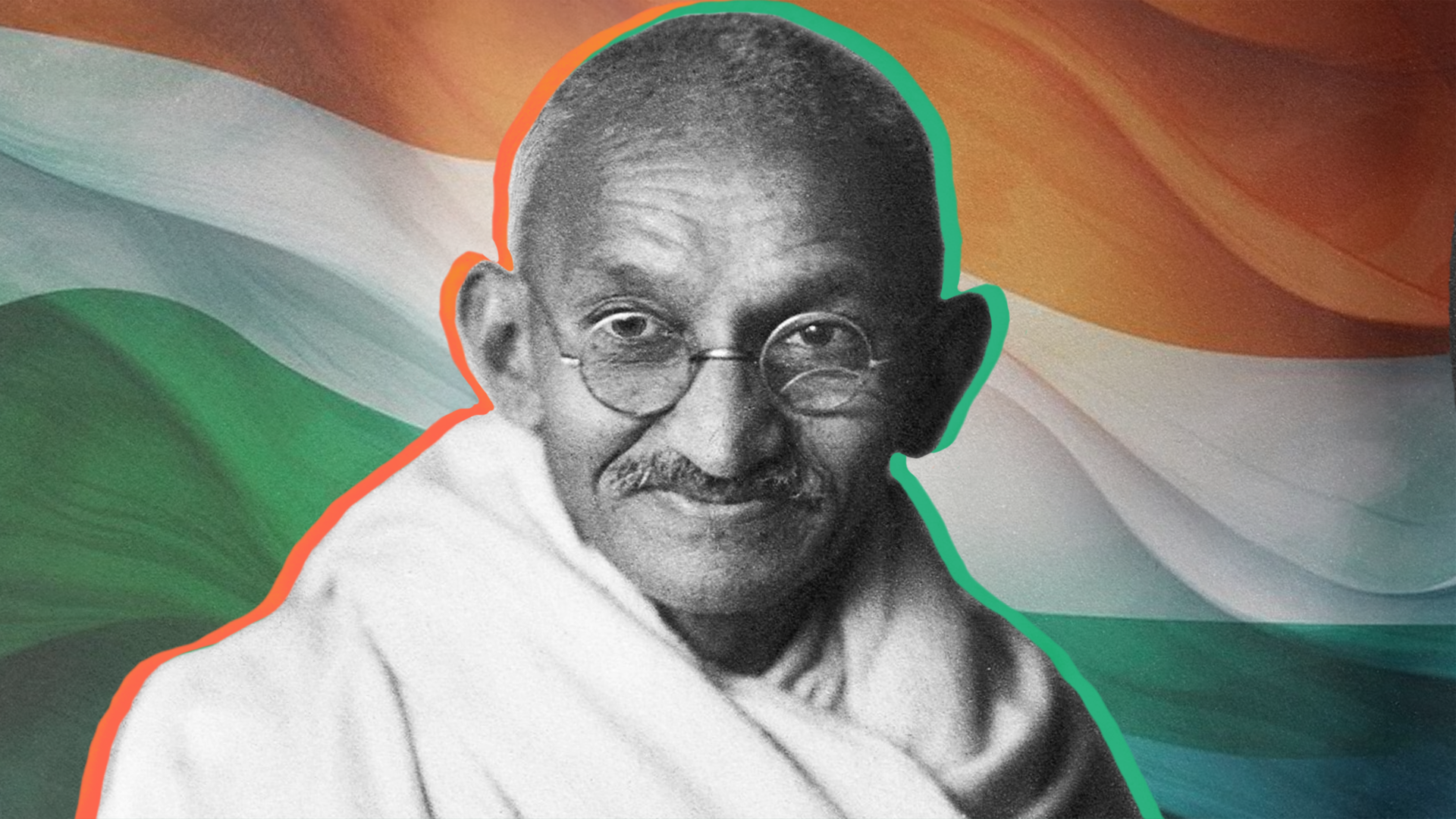Mohandas Gandhi

Mahatma Gandhi led India’s fight for independence through a radical commitment to nonviolence and truth.
Biography
If you’ve ever wondered whether one ordinary person can change the world, meet Mohandas Karamchand Gandhi—better known as Gandhi. Gandhi was born in 1869 in Porbandar, India, into a Hindu family influenced by Jain teachings about honesty, self-discipline, and nonviolence. As a child, Gandhi was shy and an average student, but those early lessons about truth and kindness stayed with him. At 19, he traveled to London to study law, learning about new cultures while holding onto those values.
After returning to India, Gandhi struggled to begin his law career, so he accepted a job in South Africa. There, he faced harsh racism—including being removed from a train for refusing to give up his seat. Instead of reacting with anger, Gandhi decided to resist injustice through peaceful means. This led him to develop satyagraha, or “truth force,” a method of nonviolent protest where people demand justice without causing harm. He organized marches, boycotts, and strikes that helped win important civil rights for Indians in South Africa.
When Gandhi returned to India in 1914, the country was under British rule. Gandhi quickly became a national leader by encouraging peaceful resistance. He urged people to make their own cloth, live simply, and refuse to support unfair laws. His most famous action was the Salt March of 1930, when he walked 241 miles to the sea to protest Britain’s salt monopoly. This simple act sparked a nationwide movement and gained worldwide attention.
Gandhi also worked to end discrimination within India. He spoke out against the caste system, calling those labeled “untouchables” Harijans, meaning “children of God.” He worked tirelessly for unity between Hindus and Muslims and often fasted to inspire peace during times of conflict. Even when imprisoned or discouraged, he stayed committed to nonviolence and truth.
Gandhi helped guide India toward independence in 1947, and his influence continues today. His life shows that real strength is not measured by force, but by the courage to choose peace, stand up for fairness, and lead with truth.
Today, Gandhi’s legacy shows up everywhere people choose courage over fear and peace over violence. Every peaceful protest, every march for justice, and every person who stands up for what’s right without hurting others is carrying a small piece of Gandhi’s satyagraha into the world.
Gandhi didn’t just lead a nation to freedom, he changed the rules of resistance. Gandhi proved that resistance could be grounded in dignity, discipline, and moral courage. His concept of satyagraha became a global blueprint for nonviolent protest. It was powerful. It demanded sacrifice, self-control, and a refusal to cooperate with injustice. His success against the British Empire showed that even the most entrenched systems of oppression could be confronted without a single weapon. Civil rights leaders from Martin Luther King Jr. to Nelson Mandela saw Gandhi not just as a hero, but as a tactical genius who exposed the moral weakness of their oppressors through peace. His legacy reminds us that movements rooted in conscience, not conquest, are the ones that endure—and transform societies from the inside out.
?
What do you think Gandhi meant when he said that small actions can lead to big change?
How does peaceful action create long-lasting change compared to violent action?
How can everyday people like you stand up for fairness in their communities?
How can refusing to cooperate with unfair rules change a system?
What qualities make someone a strong leader?
Dig Deeper
A short, engaging documentary that highlights Gandhi’s life, the Salt March, and his legacy of nonviolent resistance.
Crash Course explores how Gandhi’s methods shaped global peace movements and continue to inspire nonviolent resistance today.
Discover more

Socrates
Socrates revolutionized the way humans think by pioneering the Socratic method and proving that integrity and truth-seeking are worth defending, even at the cost of one’s life.

Sojourner Truth
Sojourner Truth was a formerly enslaved woman who became one of the most powerful voices in American history for abolition, women’s rights, and racial justice.

Nelson Mandela
Nelson Mandela was a South African freedom fighter who spent 27 years in prison for resisting apartheid and became the country’s first Black president.
Further Reading
Stay curious!
